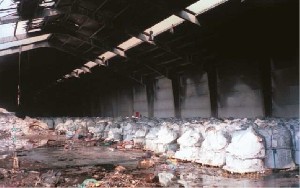On a Saturday night, fire broke out near the Antwerp Port inside a group of warehouses classified as hazardous under the SEVESO 2 Directive, in particular for their storage of bromine, formaldehyde and extremely toxic, explosive or highly inflammable substances. Since the company was specialised in freight storage, handling and distribution activities, the quantity of hazardous materials present onsite varied considerably over time. The fire occurred in a warehouse (C) containing only hazardous substances and then spread to warehouse (B), housing these same products, yet not declared as such to the authorities. Given the difficulties encountered in controlling the blaze, fire-fighters evacuated incandescent substances outside of warehouse C and set them in the building’s retention pit, thereby reducing the site’s storage capacity. The extinction water spilled, flowed into the municipal sewer line and polluted a stream, in killing fish populations. The authorities recorded these findings. The fire, which totally destroyed warehouse C and partially damaged warehouse B, was found to be arson. The operator commissioned a certified third-party expert to conduct an environmental assessment and was required to present a plan for treating the extinction water collected in the retention pits. Since the capacities of these pits had only been partially used during the accident, the operator proceeded with a revision of the site’s internal emergency plan.
Download the detailed report in .pdf format (126 Kb)





